Art World
What Unites Brilliant Artists Who Died in Their Twenties? Here Are 8 Case Studies From a New Book About Starry Lives Cut Short
A new book explores the lives and work of artists who died in their 20s.
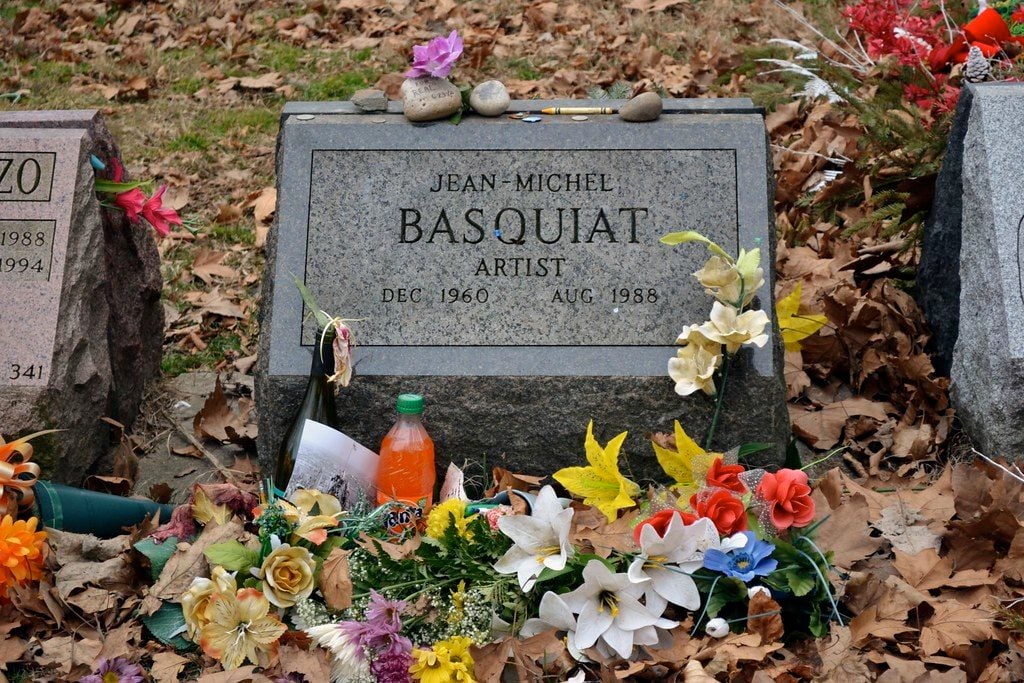
A new book explores the lives and work of artists who died in their 20s.

Caroline Goldstein &
Eileen Kinsella

In examining the many artists who died before the age of 30, authors Angela Swanson Jones and Vern G. Swanson examine 109 stories in their book Desperately Young: Artists Who Died in Their Twenties (ACC Art Books, 2020). Each is unique, though they do find obvious trends and patterns.
A surprising number (in earlier times of course) fell victim to tuberculosis or other now-curable or preventable diseases. Others (roughly 20) were victims of hazardous travel and unsanitary conditions in Rome during sojourns there (in fact, seven were Prix de Rome winners).
Of course, there is no shortage of cases where drugs and alcohol were a main cause of early death, playing into the trope of the “tortured artist.” One thing that immediately leaps out at the reader is there are far more male artists profiled here than female.
The authors insist that their work is not born out of some sort of “morbid fascination” but instead out of the impulse to imbue their subjects and the art they created with “abiding honour, recognition, and consolation.”
You may not be familiar with her name, but Jeanne Hebuterne’s face has graced more than 20 canvases in portraits painted by her lover, Amedeo Modigliani. The young artist met Modigliani—a hedonistic enfant terrible of the art world who was 14 years her senior—while she was studying at the Académie Colarossi in Paris, and was immediately swept into his orbit.
Though her later paintings showed some influence of Modigliani, Jeanne had her own distinct style that was more indebted to Matisse and the Fauves. In a self-portrait that was sold at Christie’s Paris in 2018, Jeanne stares frankly from the canvas at the viewer with a challenging gaze, wearing what appears to be a kimono, lending it the feeling of a boudoir portrait.
With only about 25 paintings to her name, Hebuterne’s story was eclipsed by that of her prolific lover and her life as a mother to his child. In January 1920, Modigliani died of meningitis brought on by his tuberculosis. Less than 48 hours later, Hebuterne, overwhelmed with grief, threw herself from the window of her parents apartment, killing herself and her unborn child.
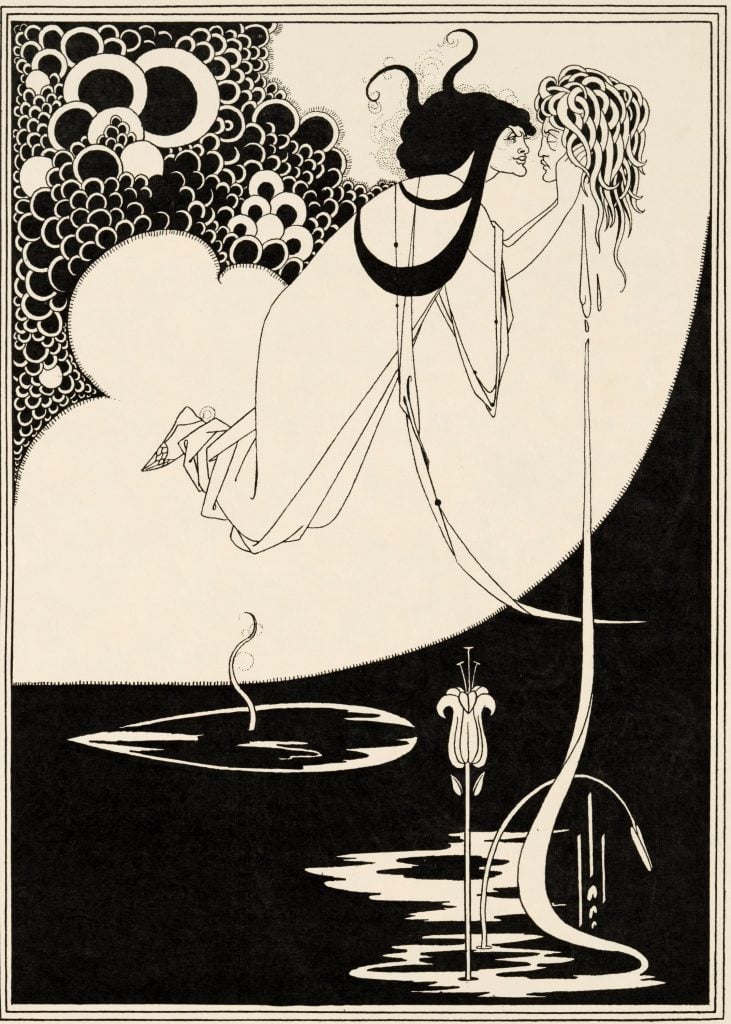
Aubrey Beardsley, Illustrations for Oscar Wilde’s Salome; The Climax, (1893), Stephen Calloway. Photo: © Tate.
The British artist Aubrey Beardsley came down with a case of tuberculosis at age seven that would haunt him and prove ultimately fatal, taking his life as it had his father and grandfather before. Beardsley showed immense promise at a young age, inspiring the Pre-Raphaelite artist Sir Edward Burne-Jones to write, “I seldom or never advise anyone to take up art as a profession, but in your case I can do nothing else.”
Beardsley’s illustrations bore the influence of Japanese woodcuts and earlier illustrators like Henri de Toulouse-Lautrec, though his work was fully unique and ushered in the period known as the Modern Style, which was the Brit’s answer to Art Nouveau. His work edged toward the erotic as he matured, with a markedly bohemian sensibility that was deemed prurient when viewed in tandem with Oscar Wilde’s work. Beardsley was considered a controversial figure in his generation.
Toward the end of his short life, the artist embraced religion, converting to Roman Catholicism and renouncing his self-proclaimed “obscene” works. Despite his pleas that publishers Herbert C. Pollitt and Leonard Smithers destroy those images, the works continued to be released into the public sphere, cementing his place in art history. Of Beardsley, the authors of Desperately Young ask, “Had he lived, would he have been as great a Christian artist as he had been a profane one?”
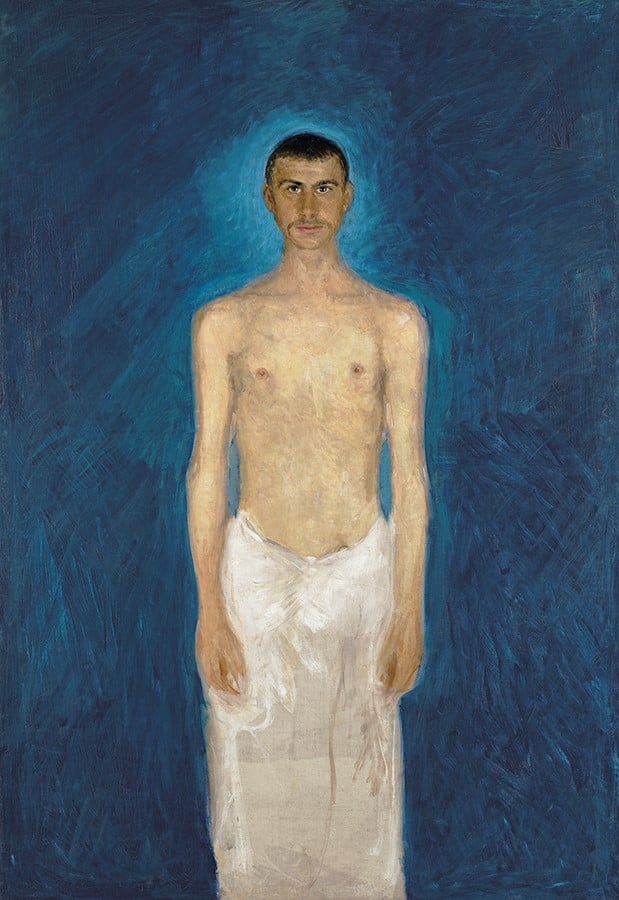
Richard Gerstl, Semi-Nude Self-Portrait (1902–04). Courtesy of the Leopold Museum, Vienna.
Austrian-born painter Richard Gerstl has one of this time’s more tragic biographies, hitting all of the notes of the classic tortured artist. After befriending the composer Arnold Schoenberg and joining his tight-knit group of creative friends, Gerstl began an affair with Schoenberg’s wife, Mathilde. After the pair were caught in flagrante, Gerstl was excommunicated from the inner circle.
Suffering from depression and becoming increasingly agitated, Gerstl’s paintings are marked by self-loathing and unhappiness, isolated and spiraling into ever-further depths of despair. On the evening of November 4, as Schoenberg was giving a concert that Gerstl had been excluded from, the disconsolate artist burned his archive of letters and drawings, stripped naked, and hanged himself in front of a mirror, also managing to stab himself savagely in a final dramatic flourish of self-annihilation.
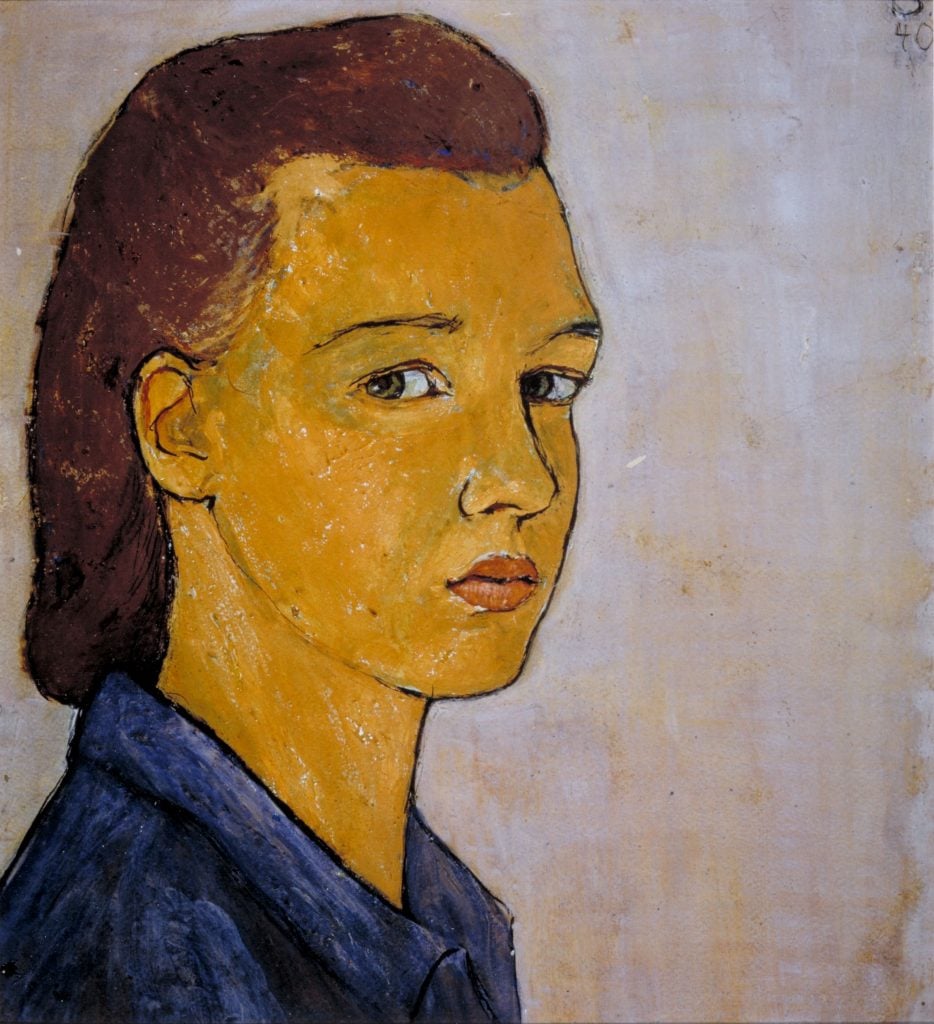
Charlotte Salomon’s Self Portrait (1940). Courtesy Jewish Historical Museum, Amsterdam © Charlotte Salomon Foundation.
The German artist was born in Berlin in 1917 during World War I and knew no shortage of suffering during her brief life. Her mother committed suicide when she was nine years old. In 1938, following Kristallnacht, her father was sent to a concentration camp for a time. Salomon went to live with her grandparents in Villefranche on the French Riviera.
“Far from being a haven, during her time there she personally witnessed her grandmother committing suicide by jumping from a window, as her mother had done,” according to the book.
Evidence suggests the artist may have been sexually abused by her grandfather. In 1943, she and her husband, whom she had married just a few months earlier, were sent to Auschwitz. Salomon, who was five months pregnant when she arrived at the camp, was murdered in the gas chambers.
Her tragic life has served as inspiration for plays, a novel, a documentary, a film, and even a ballet-opera. She is famous for an autobiographical gouache series of nearly 800 works that mixes fact and fantasy in recounting her family’s story from World War I through the rise of Nazism.
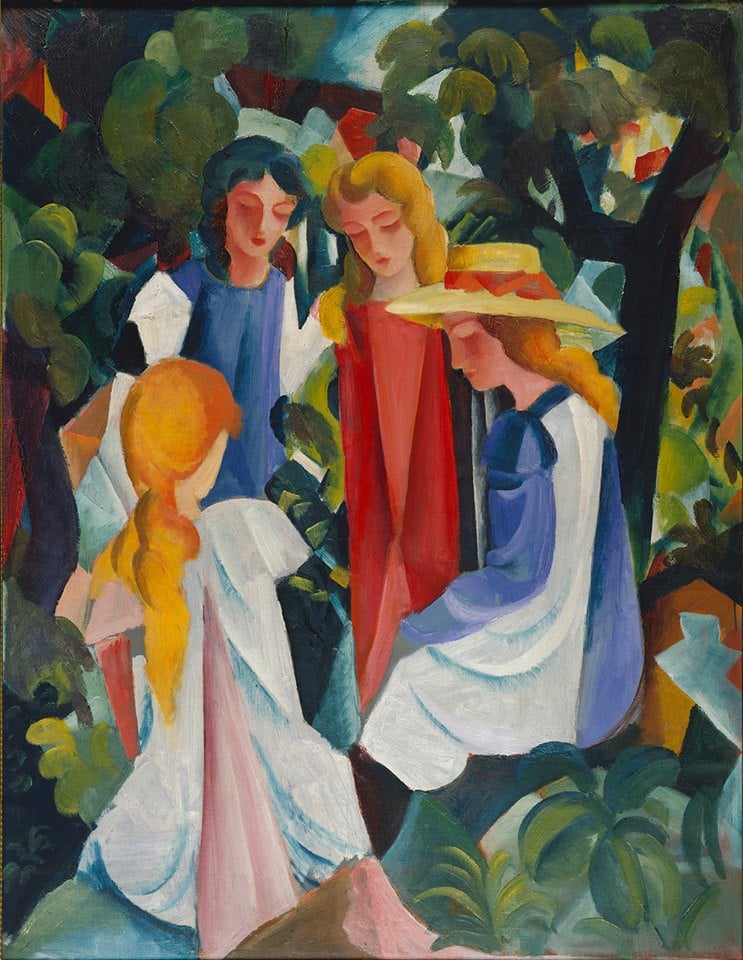
August Macke, Four Girls (1913). Photo courtesy of Museum Kunstpalast – Horst Kolberg.
Though Macke was an important German Expressionist painter, his personality and artwork were notable for his joie de vivre in contrast to the darker tones, style, and subject matter often associated with this movement. In Paris, he immersed himself in the work of the Impressionists and Post-Impressionists and the influence of Matisse resulted in a notably brighter palette for Macke.
He was conscripted into the German army in 1914 and was killed in combat in the second month of World War I. Macke’s influence on later avant-garde German painting is, as the book says, “incalculable.”
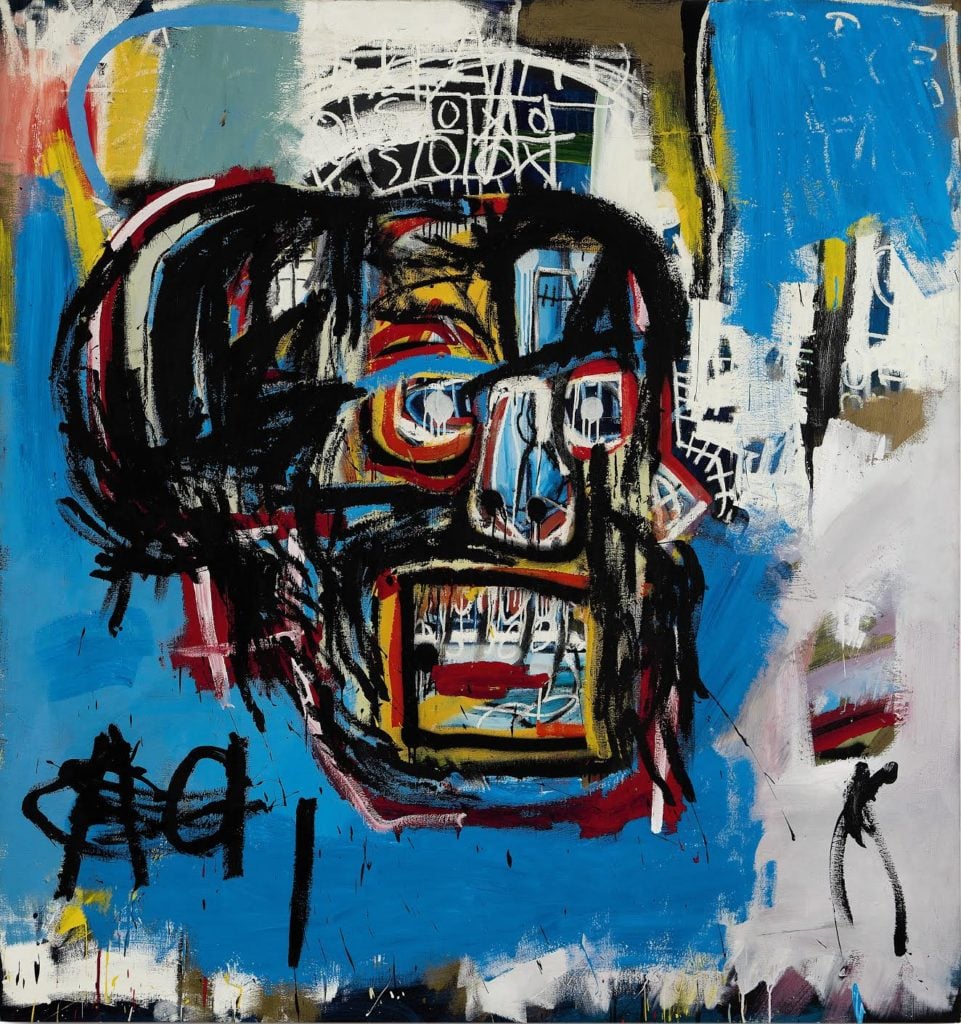
Jean Michel-Basquiat, Untitled (1982). Courtesy of Sotheby’s New York.
He is arguably the most famous artist profiled in the book and his meteoric rise to fame in the New York art world during the 1980s has been well-documented. Born in Brooklyn, Basquiat was of Haitian and Puerto Rican descent and his rebellious streak saw him take to the streets where he splashed his “SAMO” graffiti tag around prominently before getting noticed by the cognoscenti and given gratis studio space in the gallery of iconic dealer Anina Nosei.
Basquiat was famous in his own short lifetime and even collaborated with fellow art star Andy Warhol. Since his death from a heroin overdose at the age of 27, in April 1988, his work has become ever more popular and sought after. According to the Artnet Price Database, the ten highest works sold at auction each made over $30 million. The highest price ever paid for a Basquiat painting was $110.5 million at Sotheby’s in 2017. Japanese fashion mogul Yusaka Maezawa was the buyer.
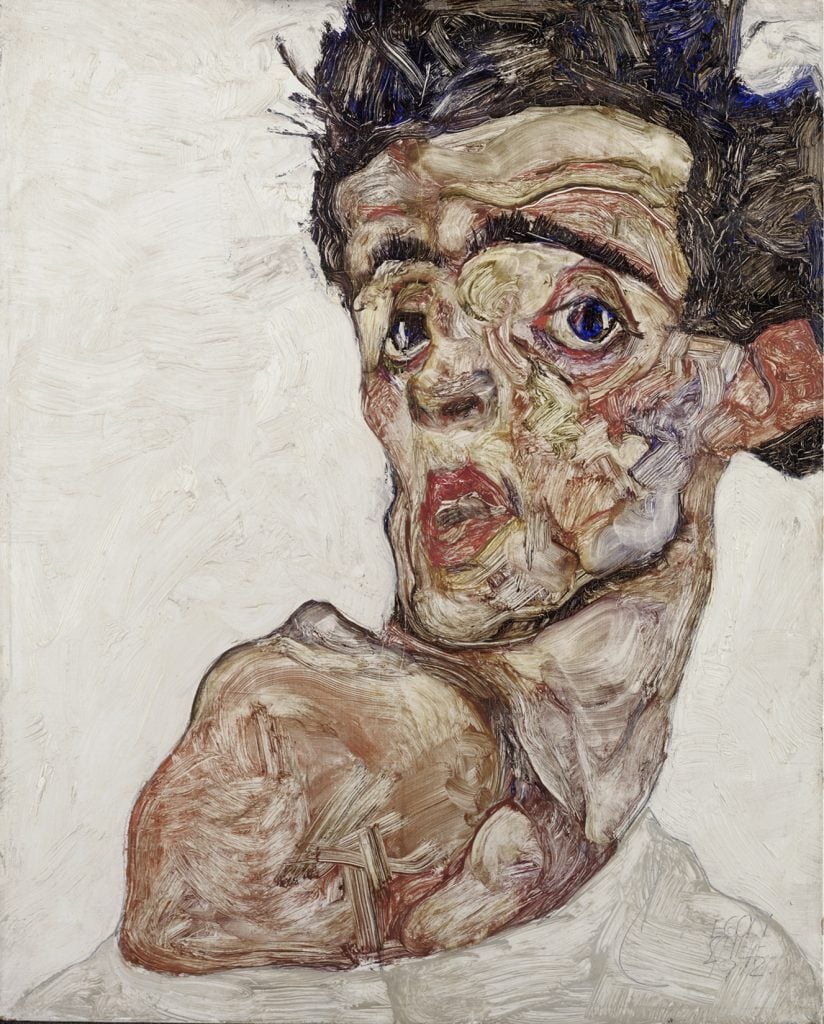
Egon Schiele, Self-Portrait with Bare Shoulder (1912). Courtesy of the Leopold Museum, Vienna.
Schiele played a major role in Austrian Expressionism and began his career as a protege of Gustav Klimt. He was extremely prolific, having created around 3,000 drawings during his lifetime. But the subject matter proved controversial—particularly erotic images of contorted and often sexually explicit nudes. The minors and young prostitutes who frequented his studio didn’t exactly help his reputation either.
In 1912, he was charged with abducting and seducing an underaged girl. The charges were eventually dropped but he was sentenced to 24 days in jail for exhibiting erotic art to children. The judge even burned a drawing in court.
In 1915, he married Edith Harms. She was six months pregnant with their first child, in 1918, when both she and the artist contracted the Spanish flu. They died within days of one another. One of the artist’s last drawings is Edith Schiele on Her Deathbed.
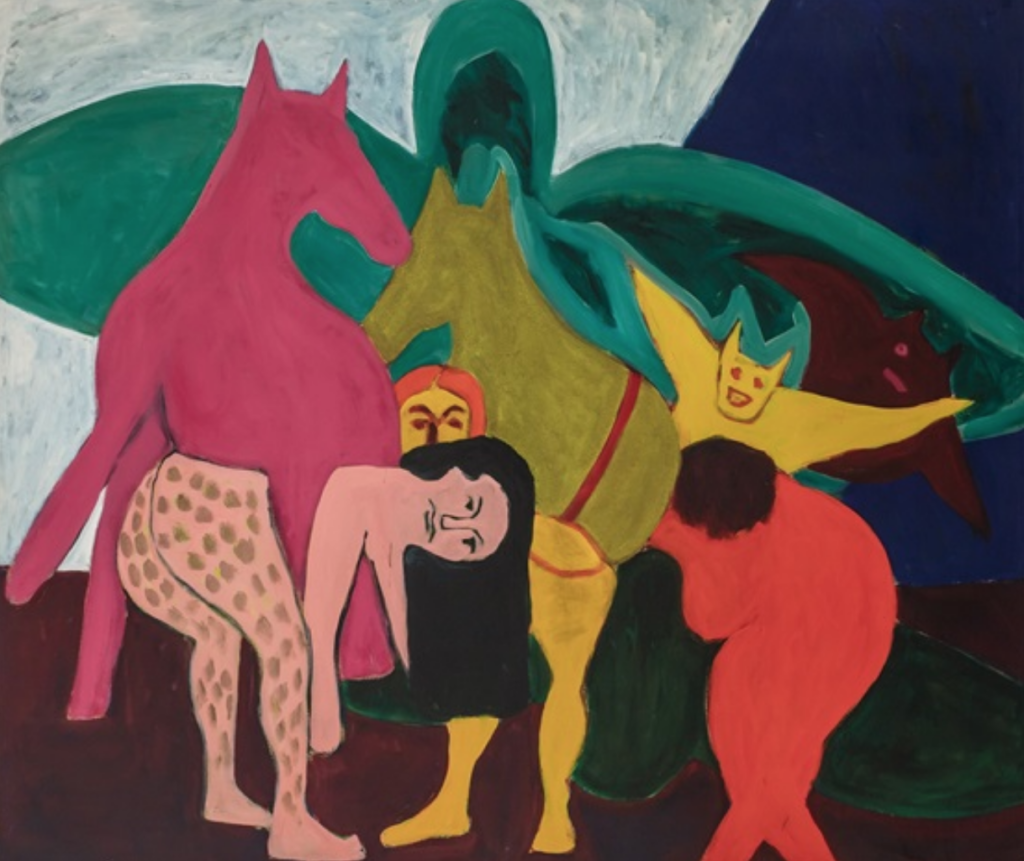
Bob Thompson, The Golden Ass (1963). Courtesy of Michael Rosenfeld Gallery.
The African American painter was influenced by a range of historical styles and types of art, from the baroque to Fauvism to Abstract Expressionism to jazz music. The result was a distinctive style marked by flatly painted, primary colored abstracted figures acting out narratives from mythology and the Bible.
Thompson received accolades during his lifetime, including a solo show at Martha Jackson Gallery in New York in 1963. He won several grants and fellowships that allowed him to take extended trips to Europe.
He battled depression from a young age and often turned to drugs and alcohol as a way of dealing. He died in Rome as a result of a heroin overdose. He was prolific and produced nearly 1,000 paintings during his lifetime, many of which now hang in prestigious private and museum collections.